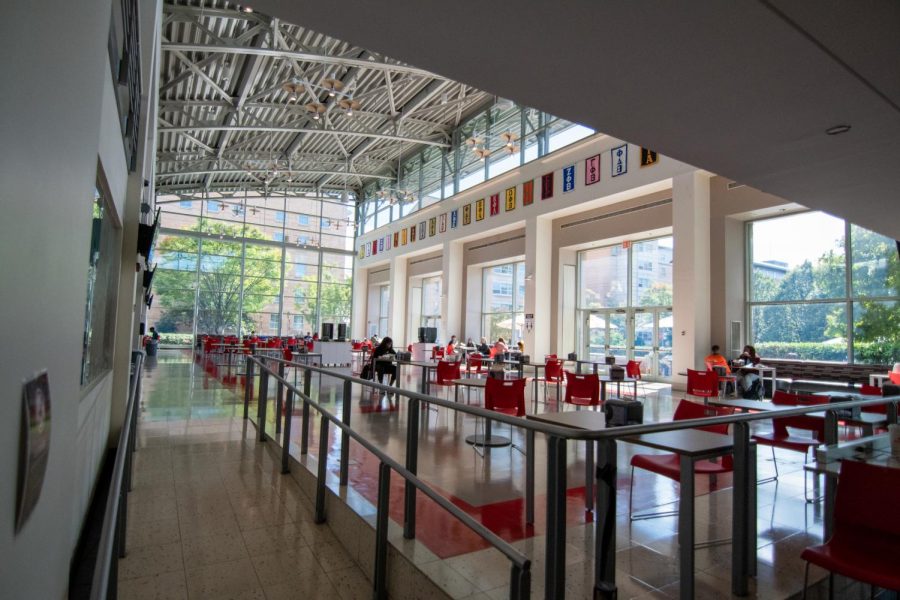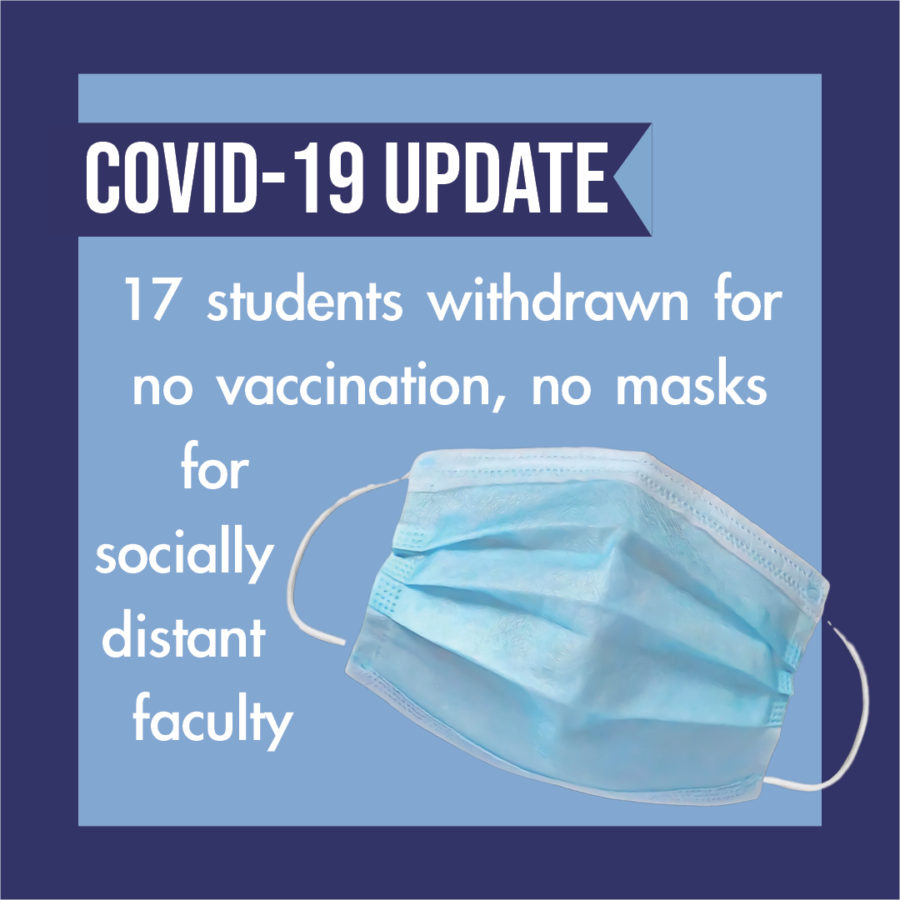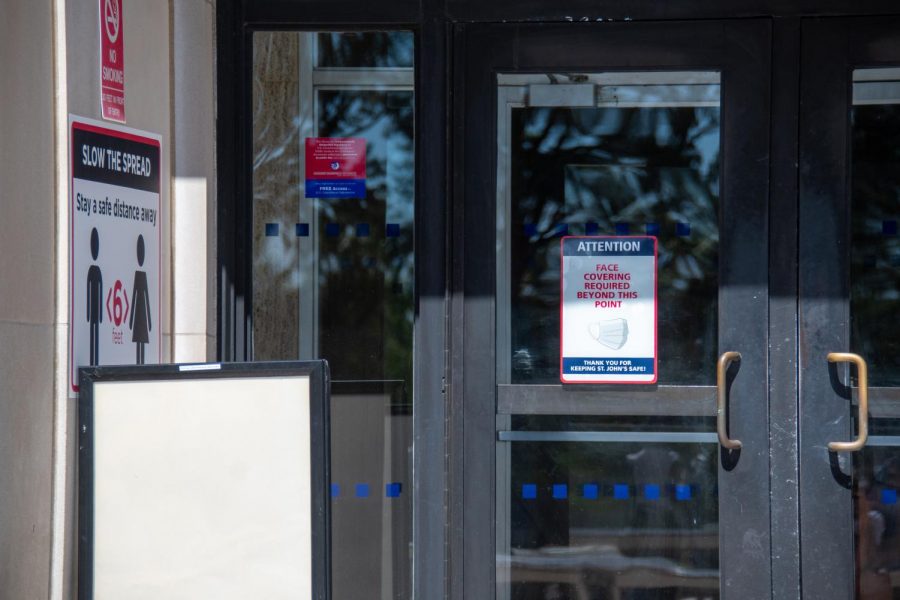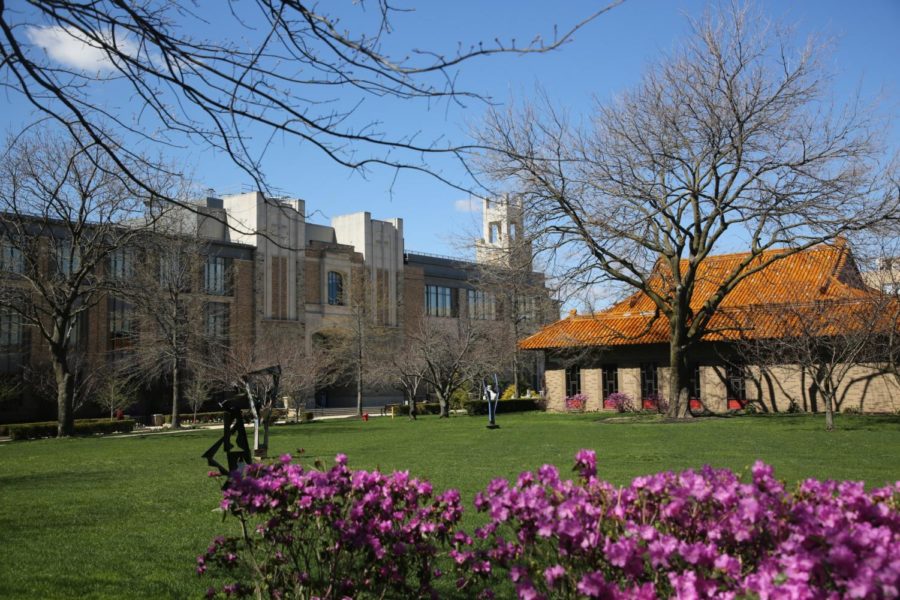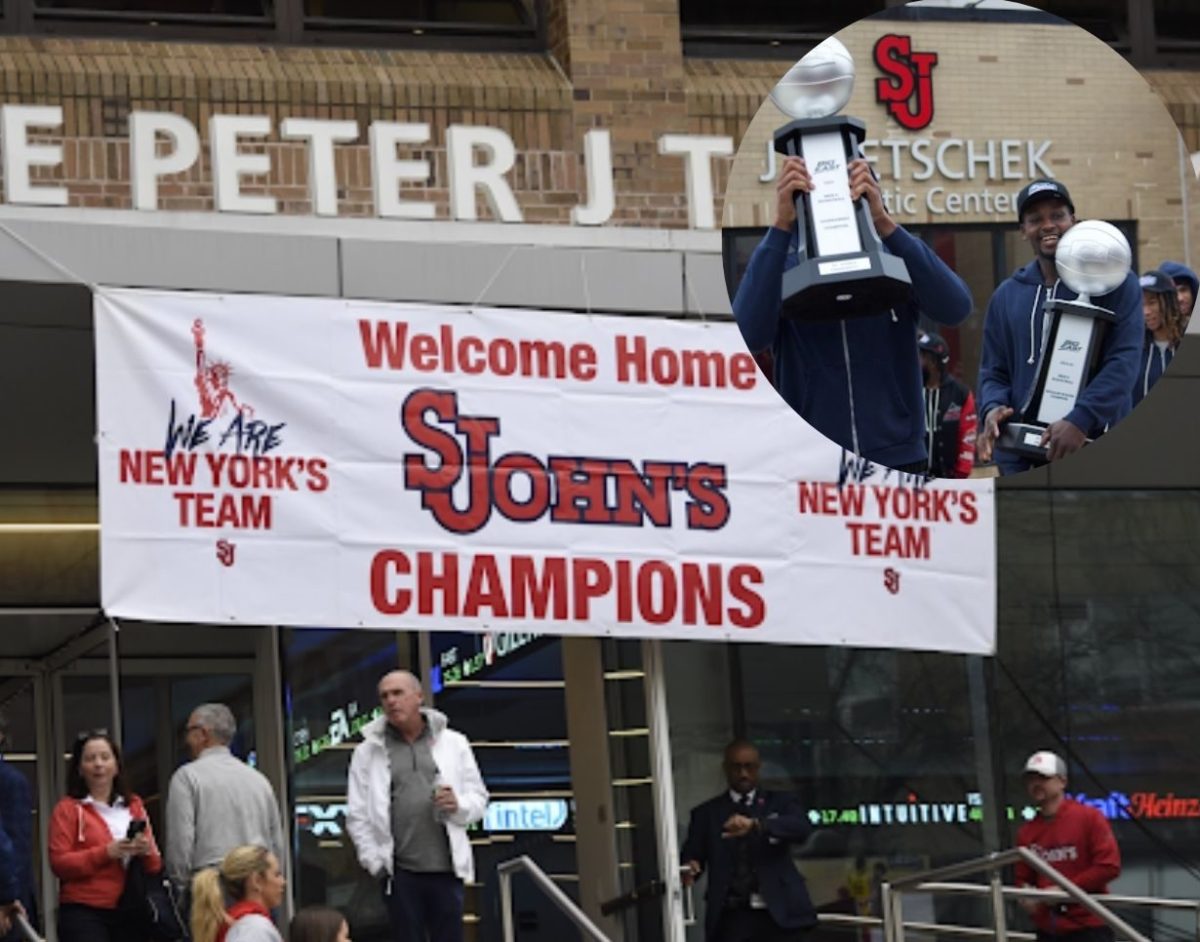St. John’s students have been dining indoors, if they choose to do so, for over a month now. The return of indoor dining at Montgoris Dining Hall (Monty’s) — an attempt to return to normalcy — arrived after five weeks of take-out only meals for students. This was one of the precautions put into place at the start of the fall semester to ensure students enjoyed the safest on-campus dining experience possible.
That sentiment of safety might feel absent to some, since students have now been dining inside Monty’s for the past 48 days. While students once had the option to dine inside of a tent outdoors, that option has been revoked, leaving them with the choice of either dining inside of the building or using a meal exchange swipe in order to take their meal back to their own residence. For students that opt to use a meal exchange swipe however, their options have become limited; with this option, they are given a bag with a plastic cup along with a ticket allowing only one meal, a drink and a dessert. For some students, this has taken the “all you can eat” experience out of the University’s only buffet dining hall.
“It’s very inconvenient,” junior Ryan Vu said. “I haven’t wanted to go to Monty’s ever since. I hardly go at all now, actually.”
To understand why students might not be satisfied with the way their campus dining experience played out this semester, it is important to understand the circumstances.
On Oct. 1, when it was announced that indoor dining could resume across the city, St. John’s also announced that they would resume indoor dining at Monty’s, keeping an option for take-out with the use of a meal exchange swipe. Key changes at Monty’s included the return of fountain drinks and the salad bar, with the latter remaining behind glass. Tables are spread out and sanitized after each use. The most notable difference is that students must now take their temperature upon scanning their StormCard in order to gain entry.
Students dining at Monty’s at the beginning of the semester received individual boxes of food from food stations managed by dining staff, and would then head to a table to bag up their food and select their drink of choice before exiting the building.
This became the new routine for diners. Because the Red Storm Diner remains closed, Monty’s turned into the new in-and-out joint with miscellaneous meal options. But for some, it didn’t come without consequence.
Vu also voiced concerns for the safety conditions at Monty’s after this change.
“I’ve seen them mix the tongs giving out food on those dine-in plates, and for someone with a high heart rate, it’s concerning for people like me or for those with a gluten allergy when the food particles mix,” Vu said.
According to Scott Lemperle, executive director of Conference & Auxiliary Services, gluten-free options continue to be offered at a designated station located just left of the Hakari Station.
“A dedicated Dining Services Associate serves students using color-coded utensils as an added safety measure,” Lemperle said in an email to the Torch.
“Dining Services always takes dietary restrictions and concerns very seriously and strongly encourages students to seek assistance from one of the Dining Services Managers or Chef’s to assist them in meeting their dietary needs,” he stated.
According to Lemperle, the move to the meal exchange option was made “for added flexibility this semester.” Students are allowed to take out up to three meals per day at Montgoris under this meal exchange program, which was specifically designed for the dining hall.
He added that students with a Carte Blanche meal plan can still access Monty’s an unlimited amount of times per day.
Senior George Whitbread, who has been dining on campus for all four years, mentioned his own grievances with the meal exchange situation.
“The problem with take-out is you don’t get enough food because of the meal exchange – it’s supposed to be all-you-can-eat,” Whitbread said.
“Before, we had the bottled water to take out, now we have the plastic cups with the loose tops that spill in your bag,” he said. “I’m tired of scooping my drink out of my bag.”
Whitbread voiced his uneasiness about the pandemic still playing a factor during the meal exchange as well.
“I shouldn’t have to risk getting [COVID-19] in order to get the amount of food my meal plan pays for.”
Even first-year students are overwhelmed with the meal exchange. Freshman Kelsey Vickers says it has added to the confusion of this unusual semester for students. What once was a convenient resort for a meal has turned into a complicated situation.
“Indoor dining definitely affects me because before I would have the option to grab some cereal or french fries to go when I’m running late and now I can’t even do that which makes no sense,” Vickers said.



